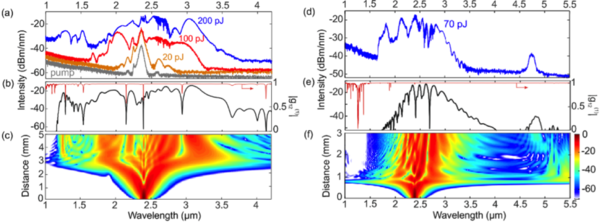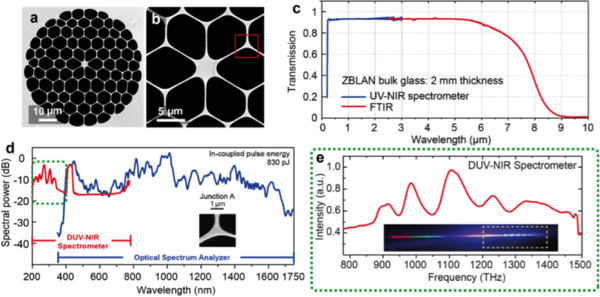Silica-based photonic crystal fibre (PCF) has proven highly successful for supercontinuum (SC) generation, with smooth and flat spectral power densities. It suffers, however, from strong material absorption in the mid-IR (>2500 nm), and optical damage (solarisation) in the UV (<380 nm), which limits its performance and lifetime. SC generation in silica-PCF is therefore only possible between these wavelength limits. Although glasses such as chalcogenides, fluorides and heavy-metal oxides have been used to extend the spectrum out to longer wavelengths in the mid-IR, none have enhanced the UV performance. In 2015, we reported the first ZBLAN PCF with a high air-filling fraction, a small solid core, nanoscale features and a near-perfect structure. We used this PCF to generate an ultrabroadband, long-term stable, supercontinua spanning from 200 to 2500 nm [Jiang (2015)].
Recently we have continued to explore open issues such as the physics of UV SC light generation and dispersion tailoring in novel structures, in various ZBLAN PCFs. Due to the limited access to raw materials, we have focused on simplified structures, for example a six-core ZBLAN fibre with nanobores in each core has been used for SC generation [Jiang (2016)]. The cores had diameters of ~1.3 μm, with nanobore diameter ~330 nm. Spectral broadening was observed when a single core was pumped in the fundamental and first higher order core-modes with 200 fs-long pulses at a wavelength of 1042 nm. The results were verified by numerical simulations.








